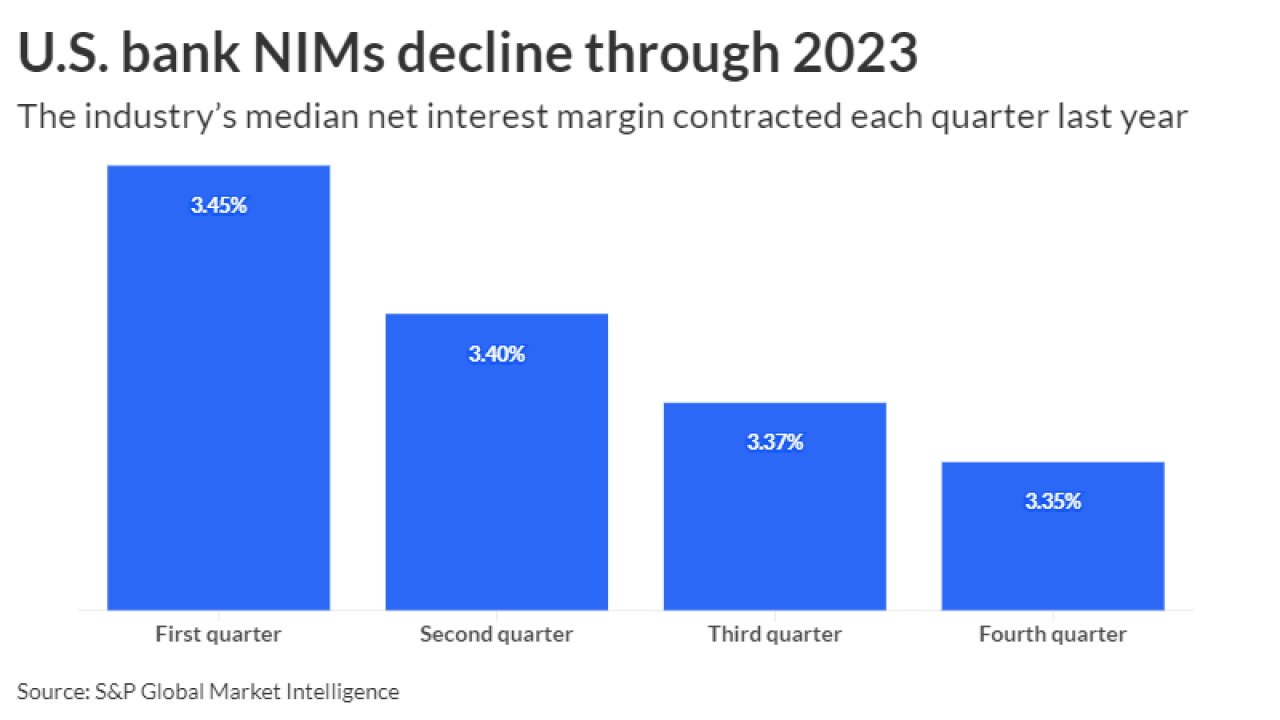-
Proceeds could be used to support the company's loan originations as well pay down existing debt coming due in the next three years.
June 14 -
Executives at the Toronto-based bank said last year that they planned to add 150 branches in the United States. But when pressed on Thursday, they could not say how much they'll scale back their ambitions due to investigations over TD's anti-money laundering practices.
May 23 -
After several quarters of slumping investment banking and trading fees, the Charlotte, North Carolina-based company reported a big uptick from that division, which helped compensate for a large decline in net interest income.
April 22 -
Net charge-offs at the Charlotte, North Carolina-based bank increased by more than 80% in the first quarter compared with a year earlier. BofA executives say that the rising losses were in line with the bank's risk appetite.
April 16 -
Traders are no longer fully pricing in a rate cut before November, while at the start of the year, cuts beginning in March were fully priced in.
April 15 -
First-quarter results at the companies were promising for other banks looking to reel in fees from capital markets activities as deposit costs put pressure on net interest income.
April 12 -
With high deposit and borrowing costs persisting amid the Federal Reserve's campaign against inflation, lenders face stress on their net interest margins and the potential of troubled loans ticking up.
April 2 -
Audited financials, proof of fidelity bonds and errors and omissions insurance must be provided on Ginnie Mae Central after May 13.
March 27 -
The increase in production revenues was canceled out by higher expenses, a sign that too much capacity remains in the system, the Mortgage Bankers Association said.
March 15 -
A rate drop was a common concern for some servicers during the quarter, and Ocwen recently took a step aimed at better addressing this risk in the future.
February 27









